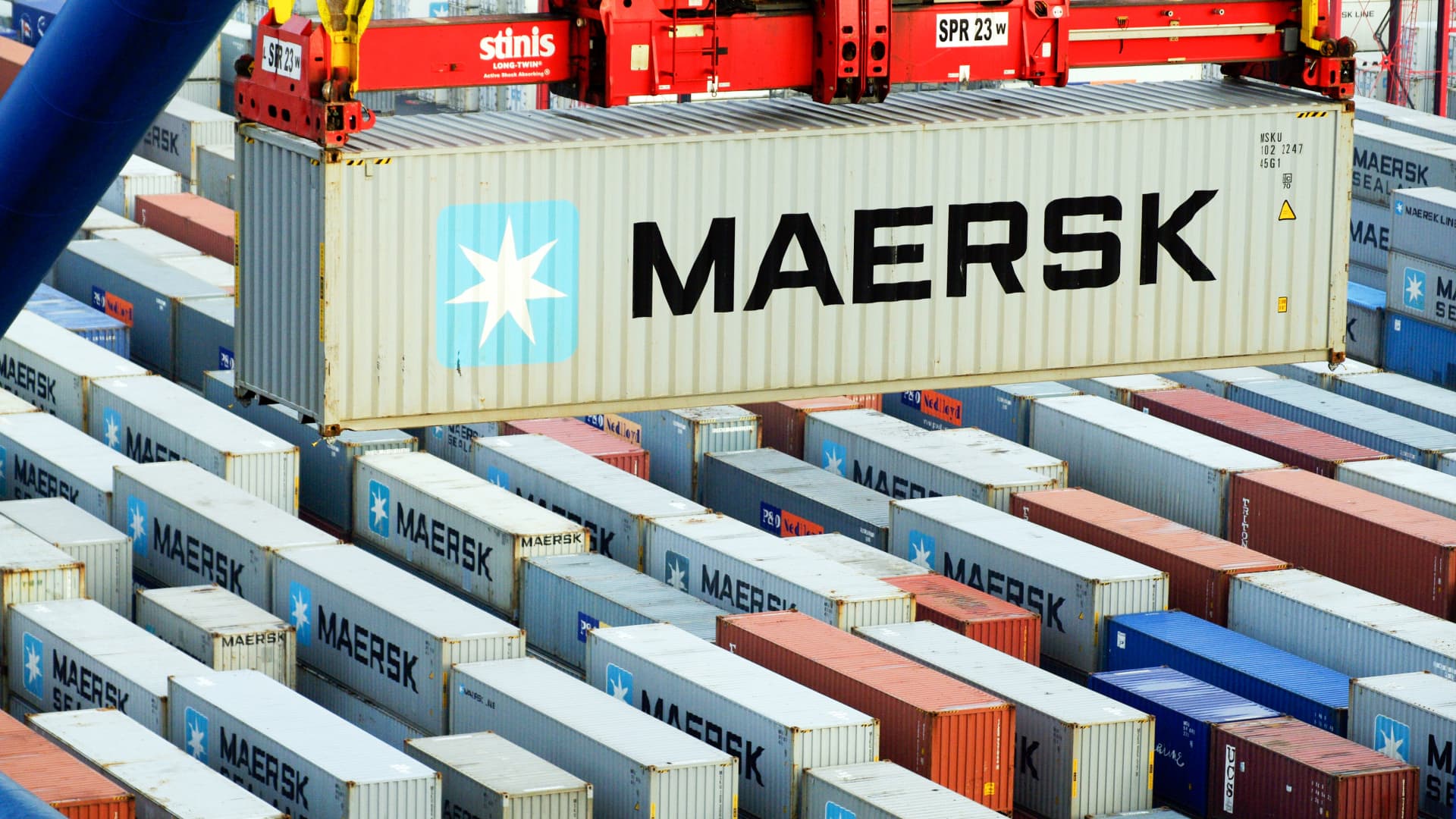Copenhagen, DENMARK — Shipping giant Maersk on Thursday presented its first container vessel moved with green methanol, a landmark moment for one of the world’s most polluting industries.
The new container ship, ordered in 2021, has two engines: one moved by traditional fuels and another run with green methanol — an alternative component, which uses biomass or captured carbon and hydrogen from renewable power. Practically speaking, the new vessel emits 100 tons of carbon dioxide less per day compared to diesel-based ships.
“It’s a really symbolic day of our energy transition, really becoming a reality, something concrete that we can actually demonstrate, not just commitments and hard work, but actually something that everybody can see,” Maersk CEO Vincent Clerc told CNBC.
This is “the first step for us. But it’s the first step for the industry as well. The ship was ordered only in 2021, and she was really the first of its kind. Today, just a couple of years later, we have 125 ships that have been ordered by different companies to actually work on the same technology and the same energy transition. So this ship is really a trendsetter for a whole industry,” Clerc said.
Evergreen and other shipping firms have ordered similar vessels, though they have less ambitious carbon neutrality targets than Maersk.
Shipping accounts for around 3% of global carbon emissions, an amount comparable to major polluting countries. However, decarbonizing the sector has been challenging.
Denmark’s Minister of Industry Morten Bodskov said this is because it is a global industry.
Around 90% of the traded goods in the world are carried via ocean shipping, according to the Organization for Economic Cooperation and Development.
“And if you want to make a global agreement, you have to have, I mean, more or less all countries behind the agreement, and then it is a industry in a highly competitive market. That has also been a key factor,” Bodskov told CNBC.
A so-called shipping tax is a good example of the challenging global conversations on how to accelerate decarbonization efforts.
In June, a group of 20 nations supported a plan for a levy on shipping industry emissions. But China, Argentina and Brazil were among the nations pushing back against such an idea.
Speaking to CNBC, Maersk’s chief said his firm is supportive of such a tax.
“We’ve long advocated the implementation of a carbon tax to really level the playing field and provide the right economic incentives for companies to really lean into the green transition,” he said.
“I’m worried about the rhetoric that energy transition is a downside and not really a great opportunity,” he added.
Supply concerns
This vessel is the first of a wider order of 25 that are due to arrive in 2024. Maersk is looking to become climate neutral by 2040, so these new vessels will be an important part of meeting that deadline and updating its fleet of about 700 ships.
However, analysts are worried that Maersk and its competitors might struggle to find enough supply of green methanol. The fuel is scarce and costly to transport.
“When I look at the market for these green fuels, methanol is definitely one of the most advanced products out there at the moment. But what I can hear from the industry and from market participants is that the wrap up of methanol, green methanol, it hasn’t ramped up very fast,” Ulrik Bak, research analyst at SEB, told CNBC on Wednesday.
“There will be a significant time where I believe that we will have more methanol vessels, then there will be green methanol to [supply] those vessels,” he said.
Maersk has signed at least nine agreements with suppliers of green methanol from all over the world in an attempt to push these firms to produce more of the commodity.
“This has been actually the main, the main headache for a while,” Clerc said.
“And it continues to be as we need to scale this up … It continues to be one of the key focus areas that we need to have today,” he said, adding “we are more confident today than we were a year ago (regarding securing supply)”.
